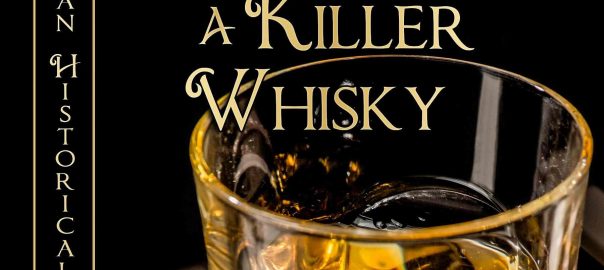When I heard that BWL Publishing planned to publish a series of Canadian historical mystery novels, I was eager to get involved. In 2021, I wrote a mystery short story set in my home city, Calgary, Alberta, during the second and deadliest wave of the 1918 influenza pandemic. I showed the story to a writer-in-residence, who suggested I turn it into a novel. This intrigued me, but I polished the short story and submitted it to the Crime Writers of Canada 40th anniversary anthology. My story, A Deadly Flu, was accepted and published last spring in Cold Canadian Crime.
But BWL’s plan prompted me to consider how I could expand my 4,500 word story into a 75,000 word novel. I mulled ideas and decided I’d add three new characters to the story: two suspects and female protagonist, Catherine. I’d still keep my original detective protagonist as a secondary narrator. He and Catherine would both have personal story arcs, including a romantic subplot. WWI would also feature more prominently in the novel, as the story built to the November 11th Armistice.
Confident these additions would give the story sufficient fodder for a novel, I asked BWL if I could write one of the books. The concept for the BWL Canadian Historical Mystery Series is that twelve different authors or author-pairs would write novels set in our ten Canadian provinces and two of our territories. Authors would have free rein over what to write, as long as the novel features a crime, takes place during a real historical time period, and is 70,000-80,000 words to keep the book sizes uniform. BWL assigned me the story set in my home province of Alberta.
The series will be published over a period of almost two years. Since I won’t have time to start writing my novel before this summer, I asked for the last publication date, December 2024. The first Canadian Historical Mystery comes out this month. Rum Bullets and Cod Fish by H. Paul Doucette, set in Nova Scotia, sounds like roaring fun. “The year is 1924 and Prohibition is spawning a new breed of criminal.” An undercover investigator tracks the ringleaders illegally transporting liquor to the US mob.
Since BWL is promoting the whole series right away, they asked each author to provide a title, story blurb, and suggestions for cover images. Luckily, I have a framework for my novel — my short story and my ideas for expansion. From this, I came up with a blurb. I also needed a new title. My short story title, A Deadly Flu, was a wink at my first novel, A Deadly Fall. For a novel I’d want something to distinguish the two books. Words like dead, murder, kill, secrets, and their variations are popular for mystery titles. I also find concrete nouns in titles conjure strong images. The weapon in my story is whisky laced with a lethal drug. I settled on a title, A Killer Whisky.
During this process, I discovered a potential problem with the word ‘whisky.’ Ireland and the USA spell whiskey with an ‘e,’ unlike Canada and the rest of the world. My research suggests this might have been due to Ireland’s desire to distinguish its whiskey from Scottish whisky. Did Canada adopt the Scottish spelling because many of our early explorers and fur trade merchants came from Scotland, while whiskey became popular in the US with waves of Irish immigration? That’s my best guess.
I debated changing my title to one that wouldn’t confuse American readers, or using US spelling, or making the poisoned drink a non-spelling-controversial liquor, like rum. But whisky is so concrete that I can almost smell it when I hear the word. It’s also infamous in western Canadian history. Our fur trade is often called the whisky trade, which caused alcoholism problems for indigenous people. In the end, I decided to stay with whisky and Canadian spelling. Early in the novel, I’ll have a character point out the difference between the countries, so US readers won’t think I can’t spell.
For images, I suggested a bottle or glass of whisky, as well as a piano. I plan to start the novel with my protagonist playing the instrument and music will feature through the story. Michelle Lee, BWL’s cover designer, worked with my suggestions and created a stunning cover. I love the golden whisky colour against the black background. I can hear the clashing chord as the glass hits the piano keys. The glass of whisky stops the music, like murder.

